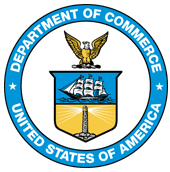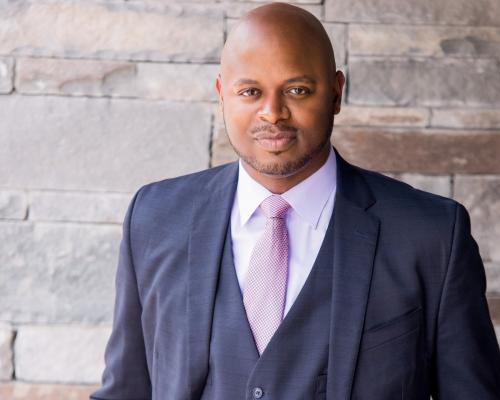DaNa Carlis, Meteorologist and Program Manager, Office of Weather and Air Quality, National Oceanic and Atmospheric Administration (NOAA)
Guest blog post by DaNa Carlis, Meteorologist and Program Manager at NOAA’s Office of Weather and Air Quality
Growing up in Tulsa, Oklahoma, weather was always very important, but as a kid I didn’t know I could make a career out of it. The part that got me interested in science was that as a middle school student, one of my science teachers would set up competitions for every test. One of the competitions was that whoever got the top grade on this science test would get a chance to go to an Oklahoma Sooners football game. I was a huge fan and loved competing, so that motivated me to do very well on that test. I got to go to two football games that season. That competition really sparked my love for science and math.
In seventh grade, I had the chance to meet Dr. Gary Davis who was an African-American doctor in Tulsa.I was friends with his son. Dr. Davis was one of very few African American doctors in Tulsa. He would tell all these stories about being a student at my high school, Booker T. Washington High School, and running his own science experiments in the Chemistry lab wearing his white lab coat. That gave me a vision for what it meant to be a scientist — he was the first African American scientist I had ever met, and that inspired me.
In high school, I figured I would study biology in college or become a medical doctor like Dr. Davis. To be honest, that was my only idea of what a scientist was. At Howard University, I took my first biology class. I did fine, but I disliked the memorization it required. What I liked about science and math was sitting down, looking at a problem and finding solutions, so I transitioned into chemistry and that’s where my interest in science really took off.
After undergrad at Howard, I knew I needed to get a masters degree to continue to be competitive in the workplace. There was a new program at Howard called the Howard University Program in Atmospheric Science, or HUPAS, which received funding from NOAA’s Educational Partnership Program with Minority-Serving Institutions. This program allowed me to continue studying chemistry, but with a focus on atmospheric chemistry. The transition was not hard and I was paid. That was the first time I had heard of any kind of graduate assistance positions. So I started that summer taking my first Atmospheric Science course and fell in love with the field immediately.
This program introduced me to NOAA, and allowed me to explore the field of atmospheric science and meteorology. People from NOAA would come in and talk about the different kinds of modeling they were doing, and I was really fascinated by the fact that we could use math and computers to forecast the weather. I felt that doing meteorology and particularly numerical weather prediction was a really cool path for me, because it was something that involved math and science and was something that people cared about and affected their every day lives. I always wanted to do work that touched people, and I think what we do as meteorologists really does impact people on a daily basis.
As I’ve gone through my career, I think what I’ve done really well is listen to people and be open to new opportunities. I had never heard of Howard University before age 16, but someone came and talked to me about it during one of my marching band meetings. He talked about it so well, and invited us to visit, and once I visited, I fell in love with it. It’s the same way with the different opportunities that were recommended to me and that I applied for at NOAA. A lot of these things were new experiences to me, and I had to assess whether it made sense for me to jump in or not. It is like hopscotch or double dutch and you have to decide if you’re going to jump in or not. That’s how I view life — there are a lot of different opportunities presented in life, you just have to take a look at them and see what make sense for you. I have lived my life in such a way that people present me with opportunities and I take the jump to see if it works, and for the most part it has paid off and worked.
Now, I’m a program manager in the Office of Weather and Air Quality, where I oversee the Earth Prediction Innovation Center, or EPIC. EPIC is really a fantastic idea developed by Dr. Neil Jacobs, Dr. Bill Lapenta and others in the weather community. It really is an opportunity for NOAA to work well with the weather community. I’m really excited about the program's extramural center where we have the expertise to build the tools necessary to develop an advanced earth modeling system. I am also excited about the fact that, when EPIC launches, it will transform the way we do business internally at NOAA. To me, there are benefits for the outside community to come in and do research on operational systems, but there also is a great opportunity for NOAA in general to work more seamlessly across its many offices that do modeling. So whether you work in ocean, wave, coastal, air quality, or climate modeling, this will allow us to all work together on the same platform to advance the state of our operational systems.
Also, as a program manager, I have had the opportunity to communicate with researchers as well as policymakers to advance the state of science. You have to be a good communicator, a good listener, and have the technical background in order to know which projects are most important and which are best for your program.
My favorite part about my job is, first and foremost, being able to create opportunities for others. I served as one of the original organizers of the NOAA Diversity and Inclusion Summit that has taken place annually since 2016. However, one of the coolest things I have done is work with NOAA’s Diversity and Professional Advancement Working Group, which I started with Michelle Hawkins in 2014 for people who are interested in advancing their career and impacting change within our agency. In this role, we have had great success in creating conversations and advancing diversity and inclusion within NOAA.
Throughout my career, my strategy has always been: Ask questions, but follow through, because whoever is answering the questions is probably pretty busy. I believe that everybody I meet is an opportunity to learn something new. When I was younger, I would ask basic, open-ended questions so that people could philosophize about whatever it was I was asking about — whether it be advice on graduate school, career, etc. As a young person, I was always afraid of making mistakes. I paid for school through my undergraduate years, so I knew I needed to make money once I was done. Once I felt like I knew what I really wanted, I knew my decisions would be based on multiple conversations with people who were way more experienced than me.
I have also learned that, no matter what, if you think you’re going to get the job or not, apply for it. Apply for any and everything, and don’t be afraid to really put yourself out there. Fear shouldn’t be part of our vocabulary. Especially as underrepresented minorities, we need to be steadfast and confident in who we are, understand what our value is, understand that we are valuable, and go into spaces confident, focused, and as early contributors. Thankfully, the young people I meet today seem to have so much confidence. As our country becomes more multicultural, there’s not this inherent fear within young people, especially young people from underrepresented communities, compared to when I was growing up.
My advice to young people would be to get involved and don’t sit on the sideline watching the world go by. Be the difference that you want to see in the world. Seek out conferences like the Black Engineer of the Year Award (BEYA), Women of Color STEM conference, and SACNAS (the Society for Advancement of Chicanos/Hispanics and Native Americans in Science) and meet other scientists from underrepresented communities. Join organizations like National Society of Black Engineers, National Technical Association, American Meteorological Society, American Geophysical Union, and NOBCCHe (National Organization for the Professional Advancement of Black Chemists and Chemical Engineers).
In the future, I want to continue to bring younger people along through mentoring and coaching, especially women and people from underrepresented groups. I have a passion for that. I want to see more women and more people of color in NOAA leadership — that’s my goal.
Ed. note: This post is part of the Spotlight on Commerce series highlighting the contributions of Department of Commerce African Americans during Black History Month.


